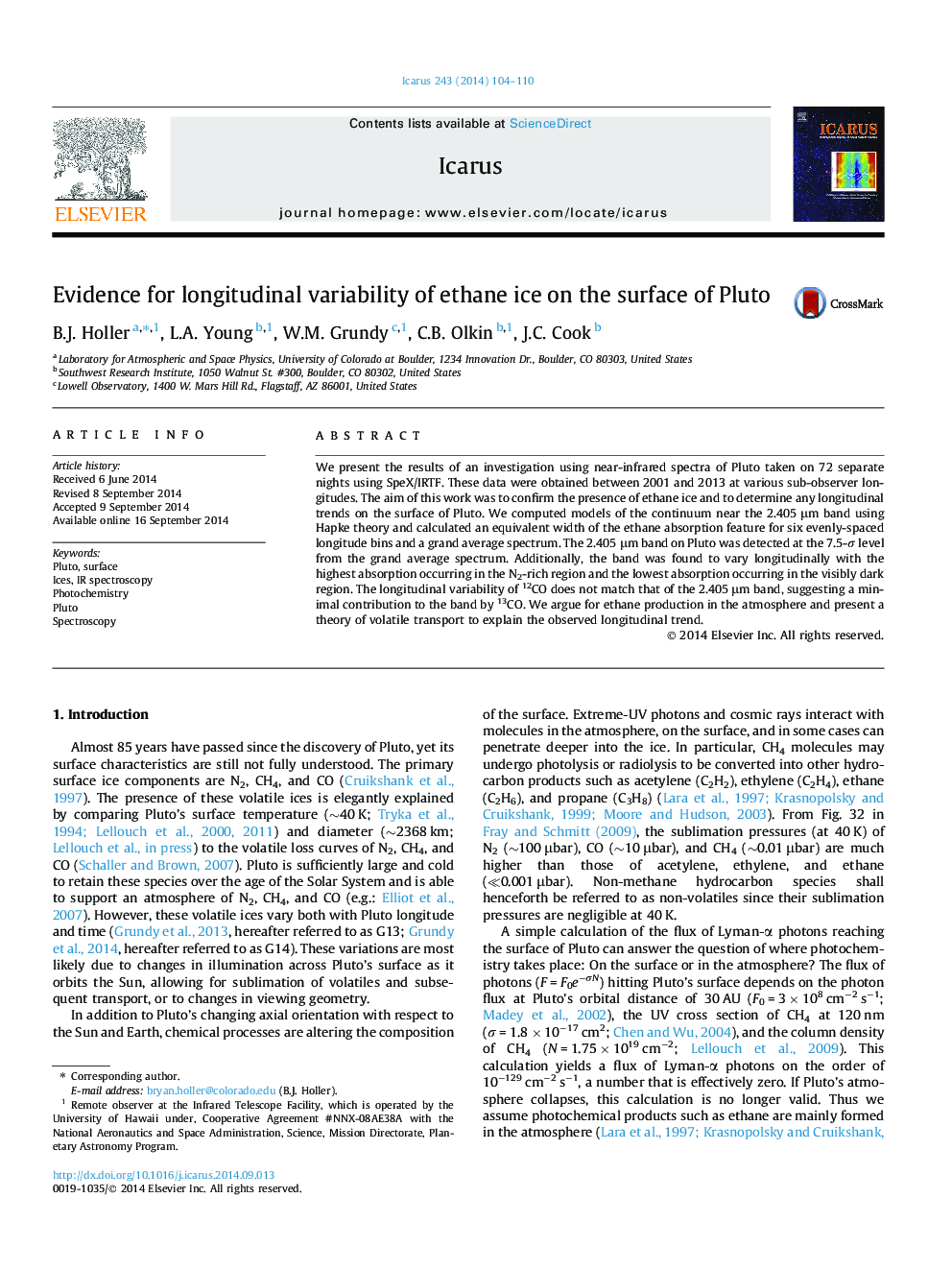| Article ID | Journal | Published Year | Pages | File Type |
|---|---|---|---|---|
| 1773086 | Icarus | 2014 | 7 Pages |
•We have 72 combined Pluto/Charon spectra from IRTF/SpeX.•Spectra were divided into six 60° longitude bins.•We detect the 2.405 μm band on Pluto at the 7.5-σ level.•Ethane ice is seen to vary with longitude in an unexpected way.•Volatile transport is responsible for the observed distribution.
We present the results of an investigation using near-infrared spectra of Pluto taken on 72 separate nights using SpeX/IRTF. These data were obtained between 2001 and 2013 at various sub-observer longitudes. The aim of this work was to confirm the presence of ethane ice and to determine any longitudinal trends on the surface of Pluto. We computed models of the continuum near the 2.405 μm band using Hapke theory and calculated an equivalent width of the ethane absorption feature for six evenly-spaced longitude bins and a grand average spectrum. The 2.405 μm band on Pluto was detected at the 7.5-σ level from the grand average spectrum. Additionally, the band was found to vary longitudinally with the highest absorption occurring in the N2-rich region and the lowest absorption occurring in the visibly dark region. The longitudinal variability of 12CO does not match that of the 2.405 μm band, suggesting a minimal contribution to the band by 13CO. We argue for ethane production in the atmosphere and present a theory of volatile transport to explain the observed longitudinal trend.
